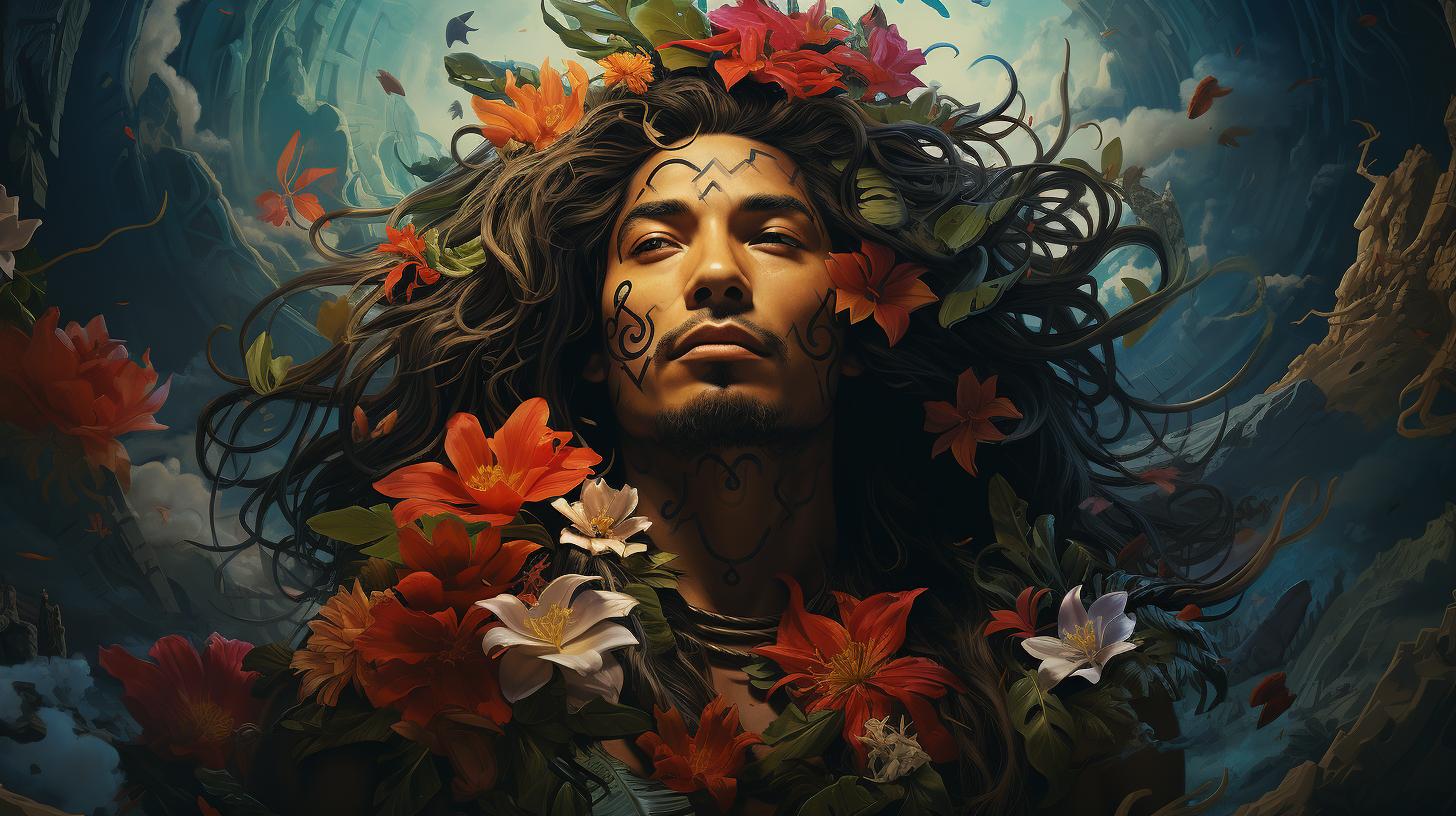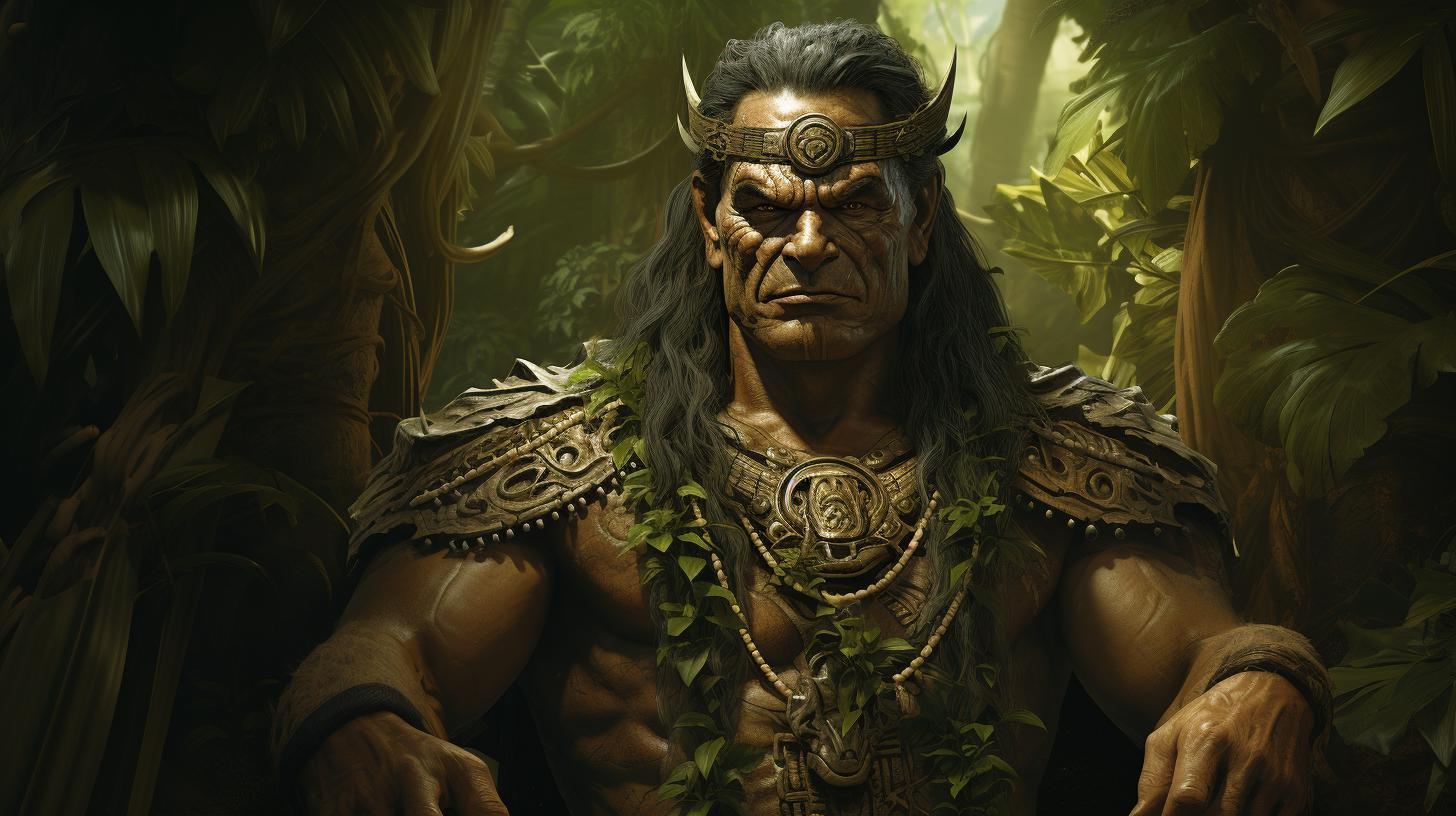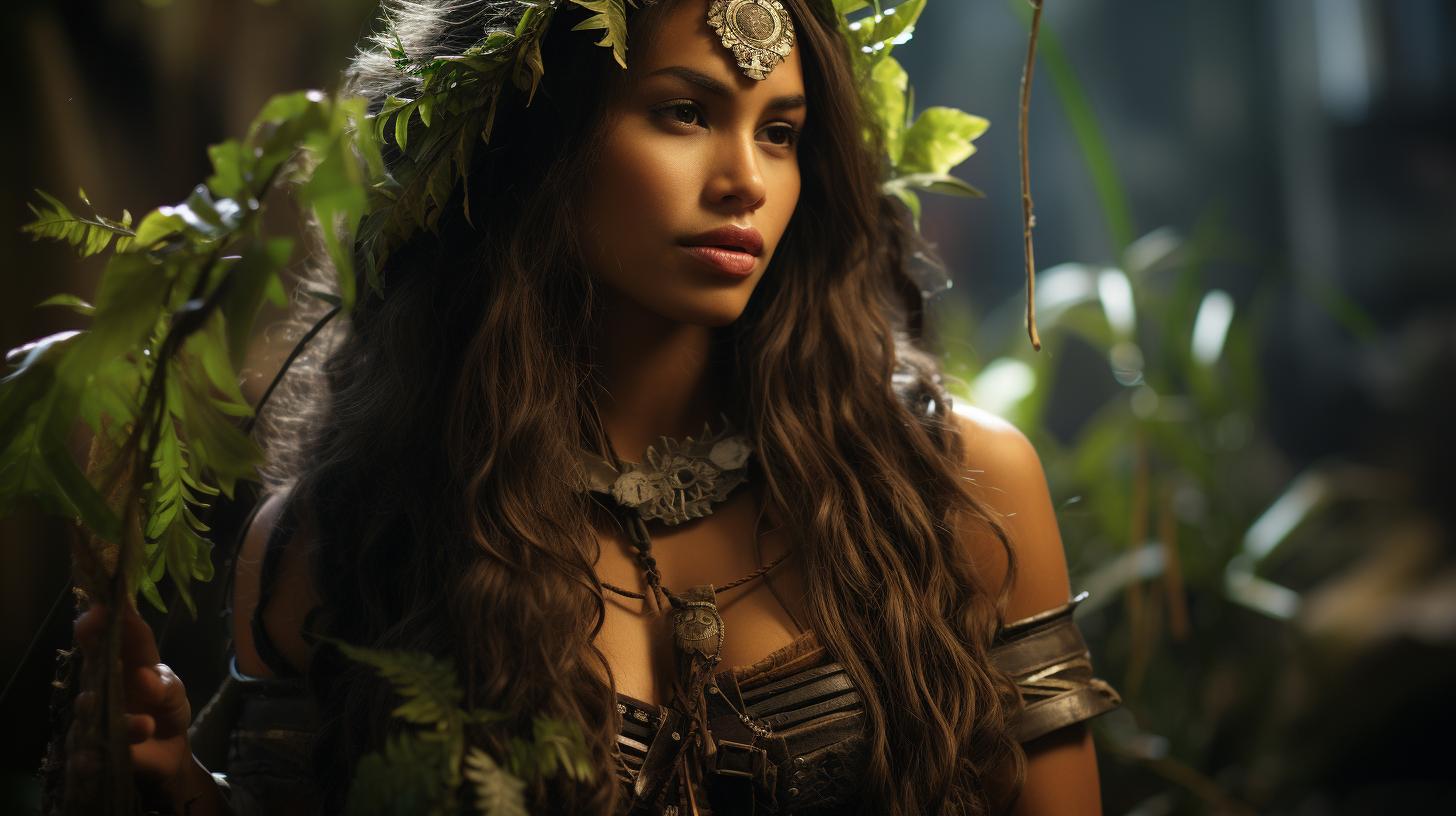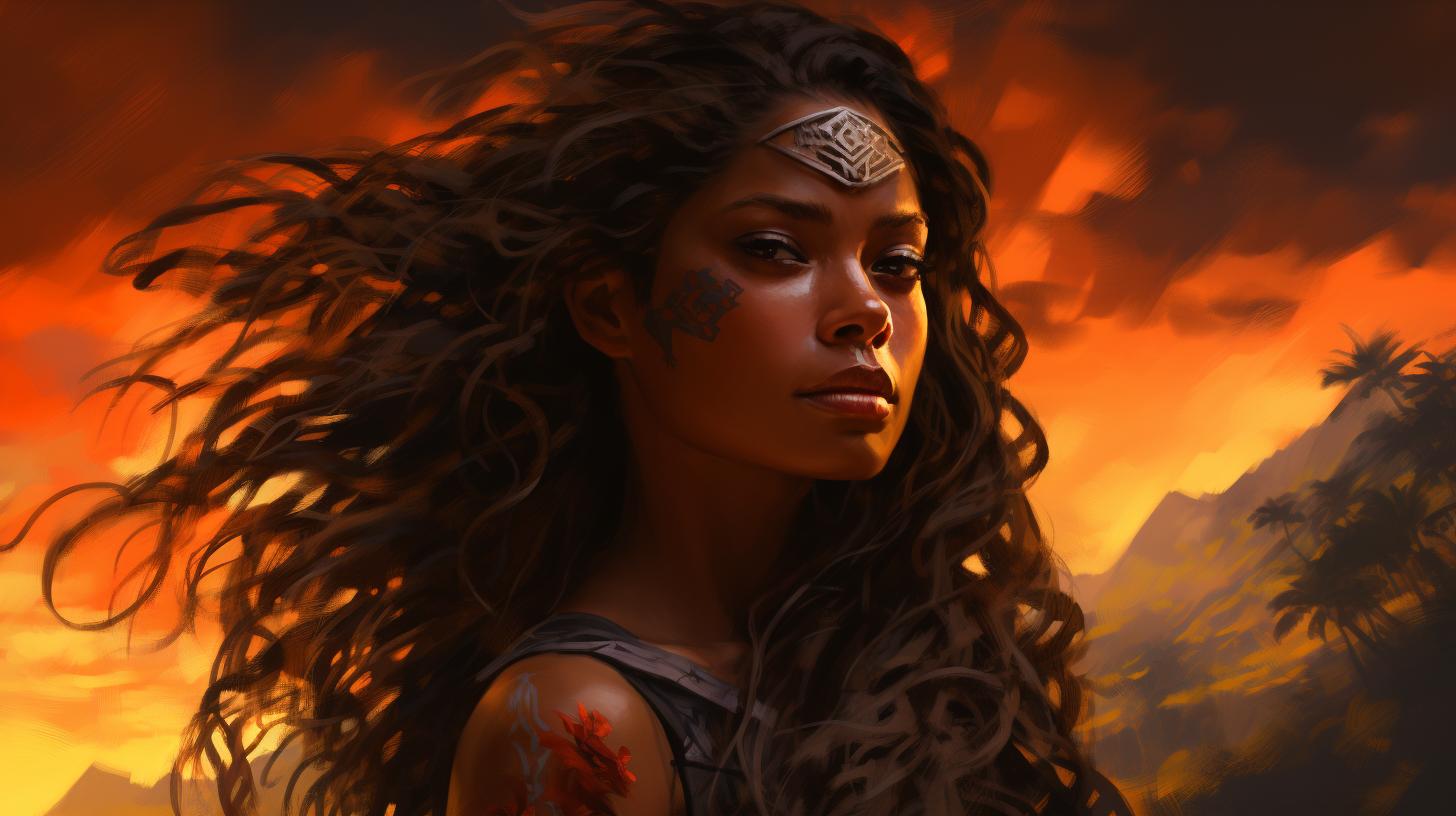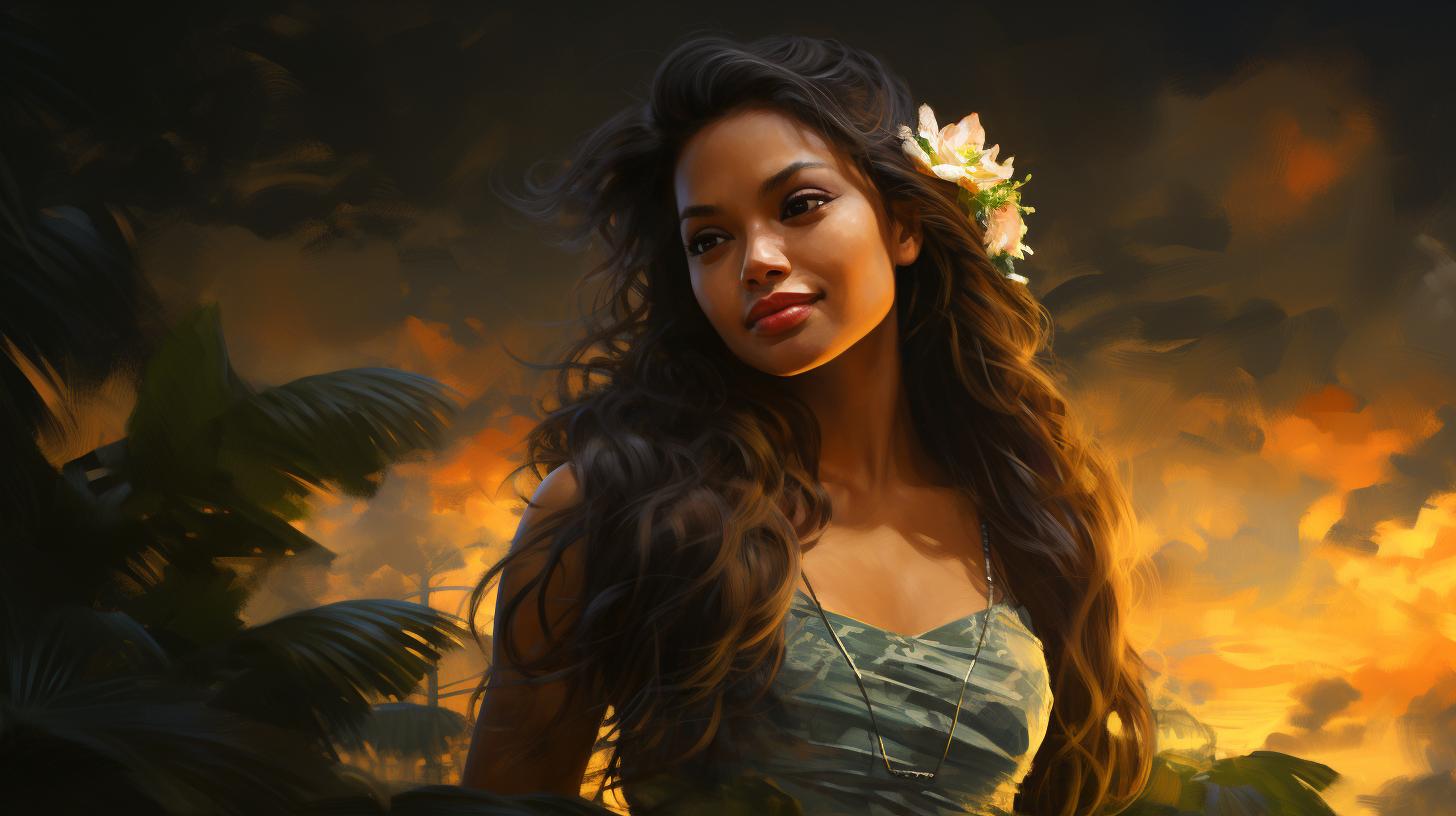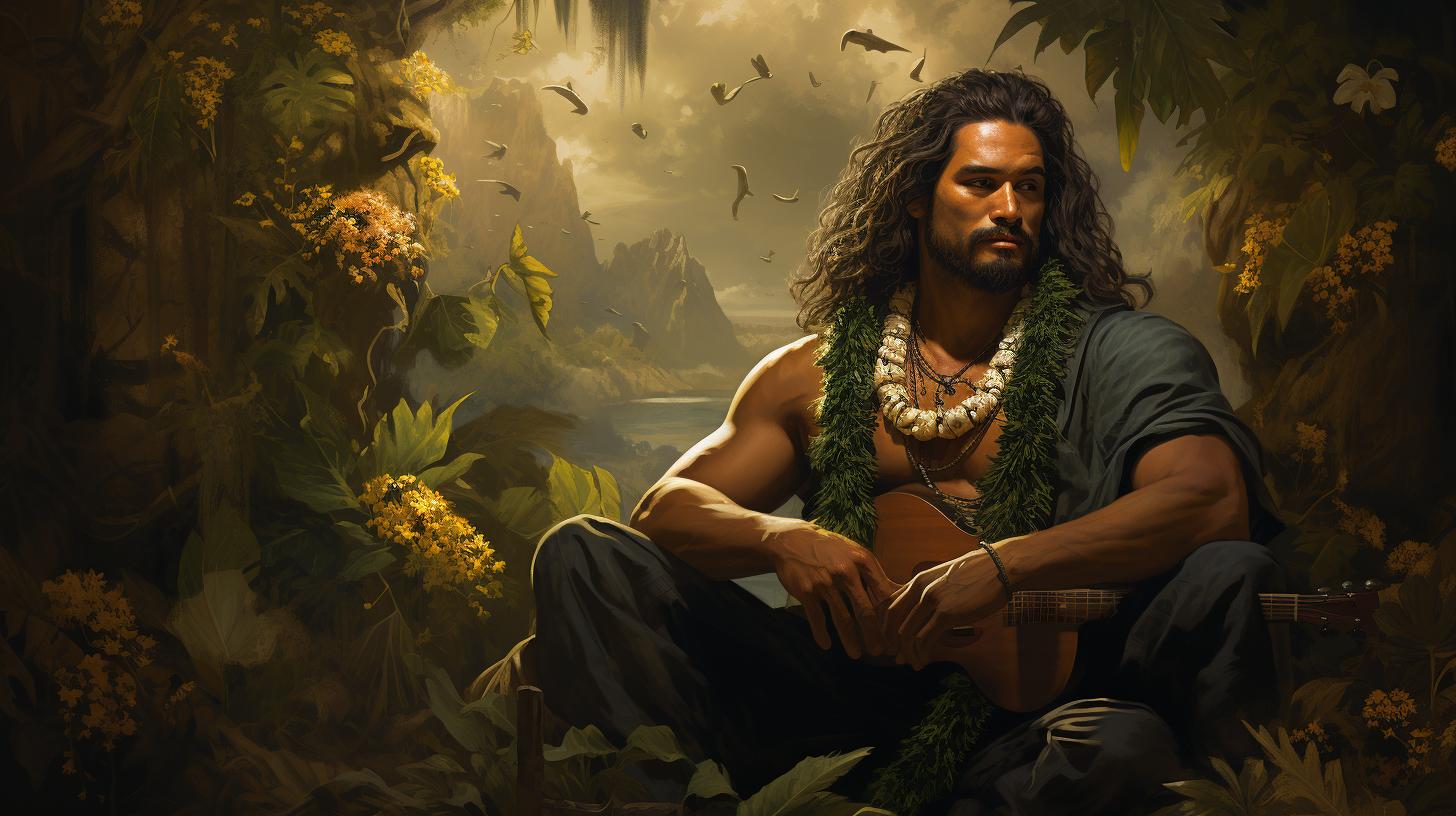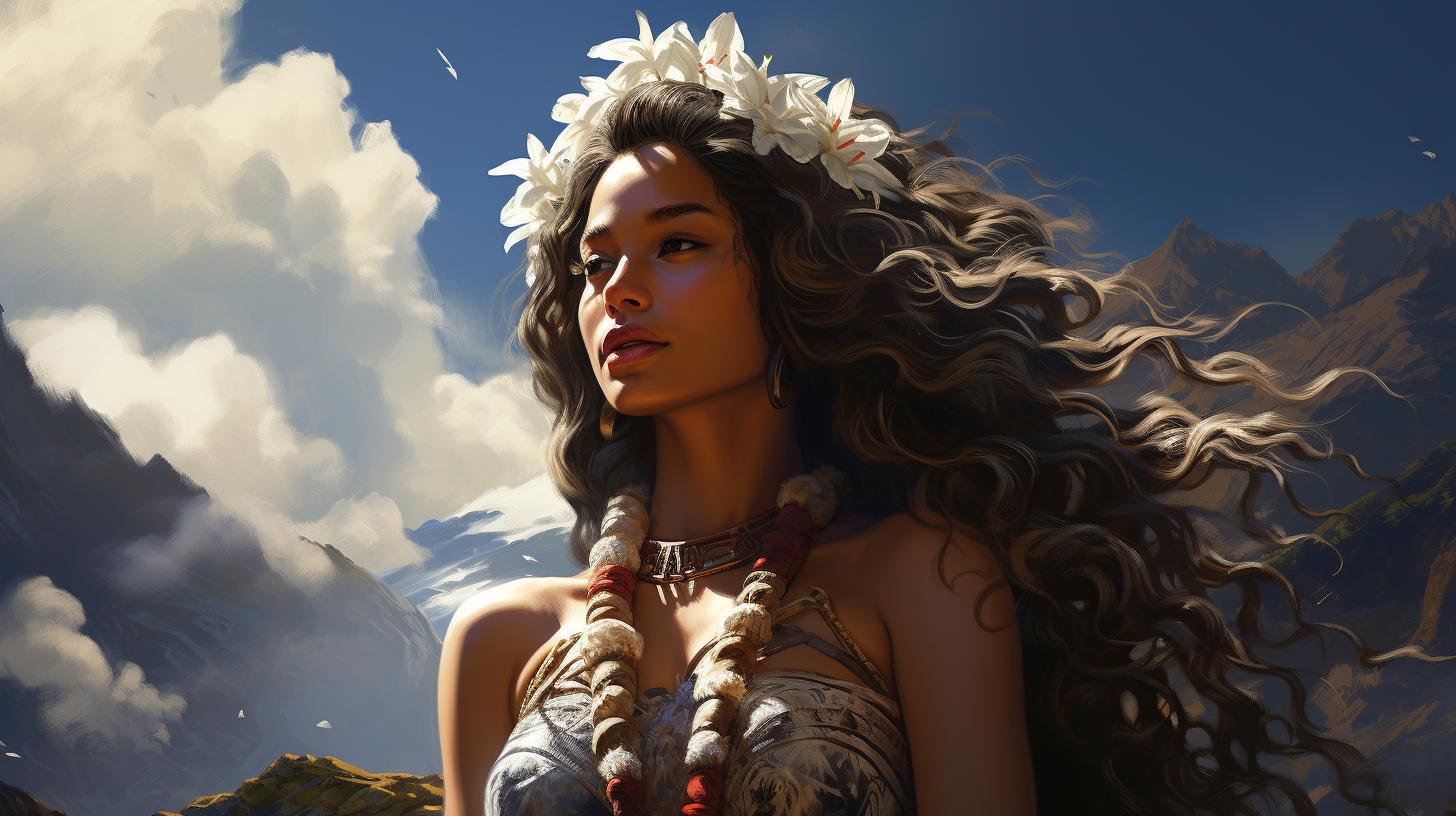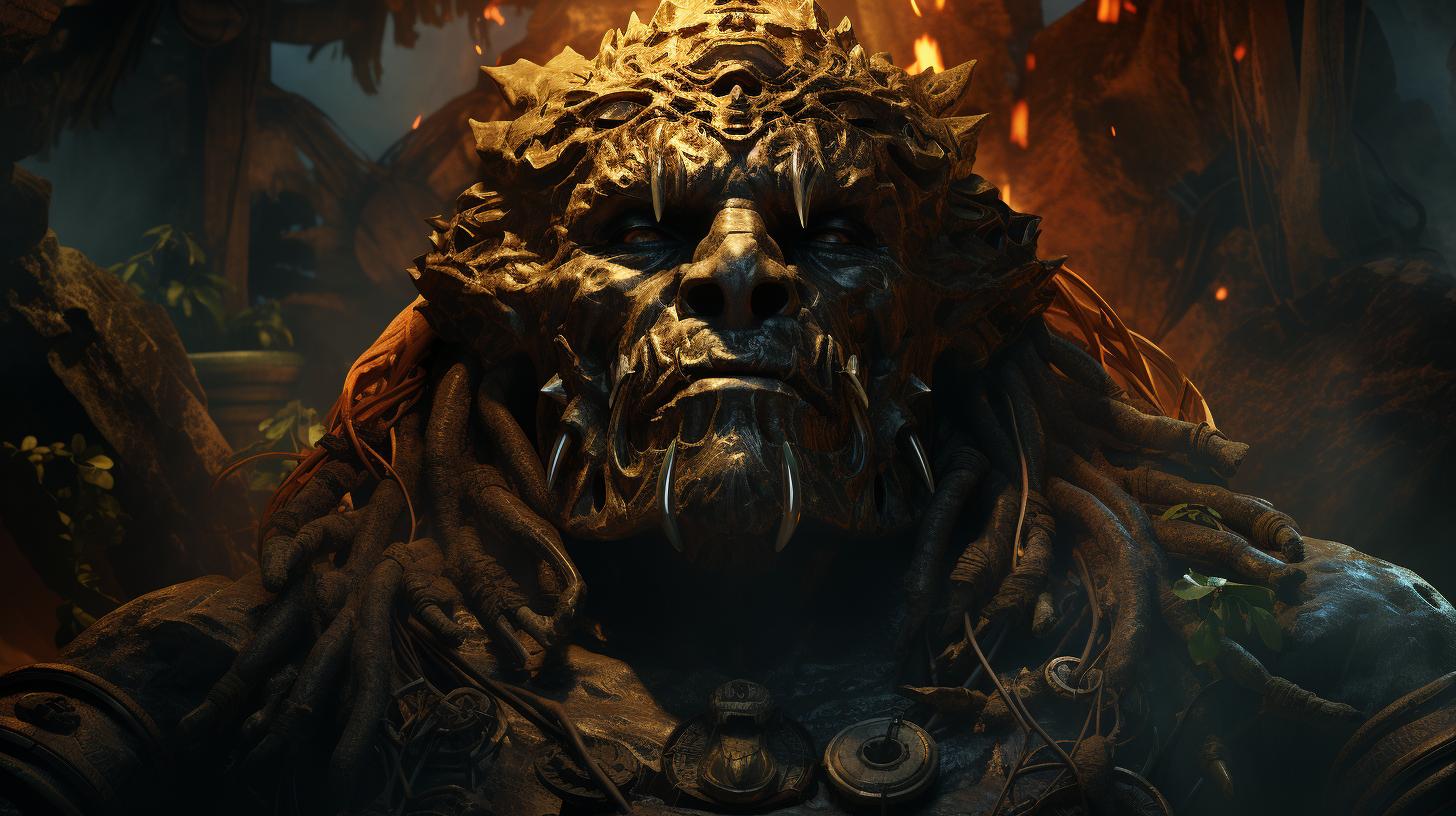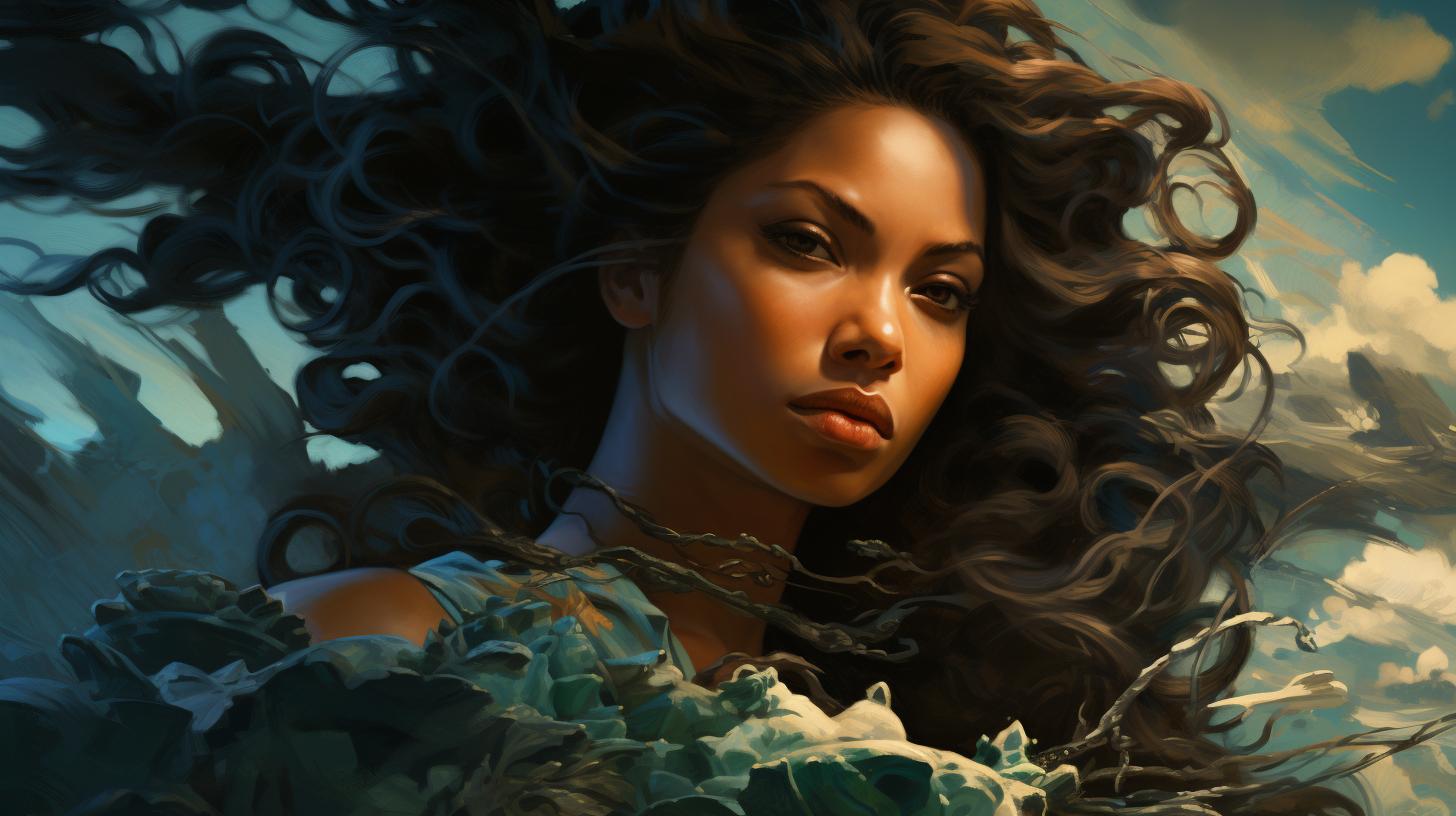Kāne: The Ancient Hawaiian God of Creation and Life
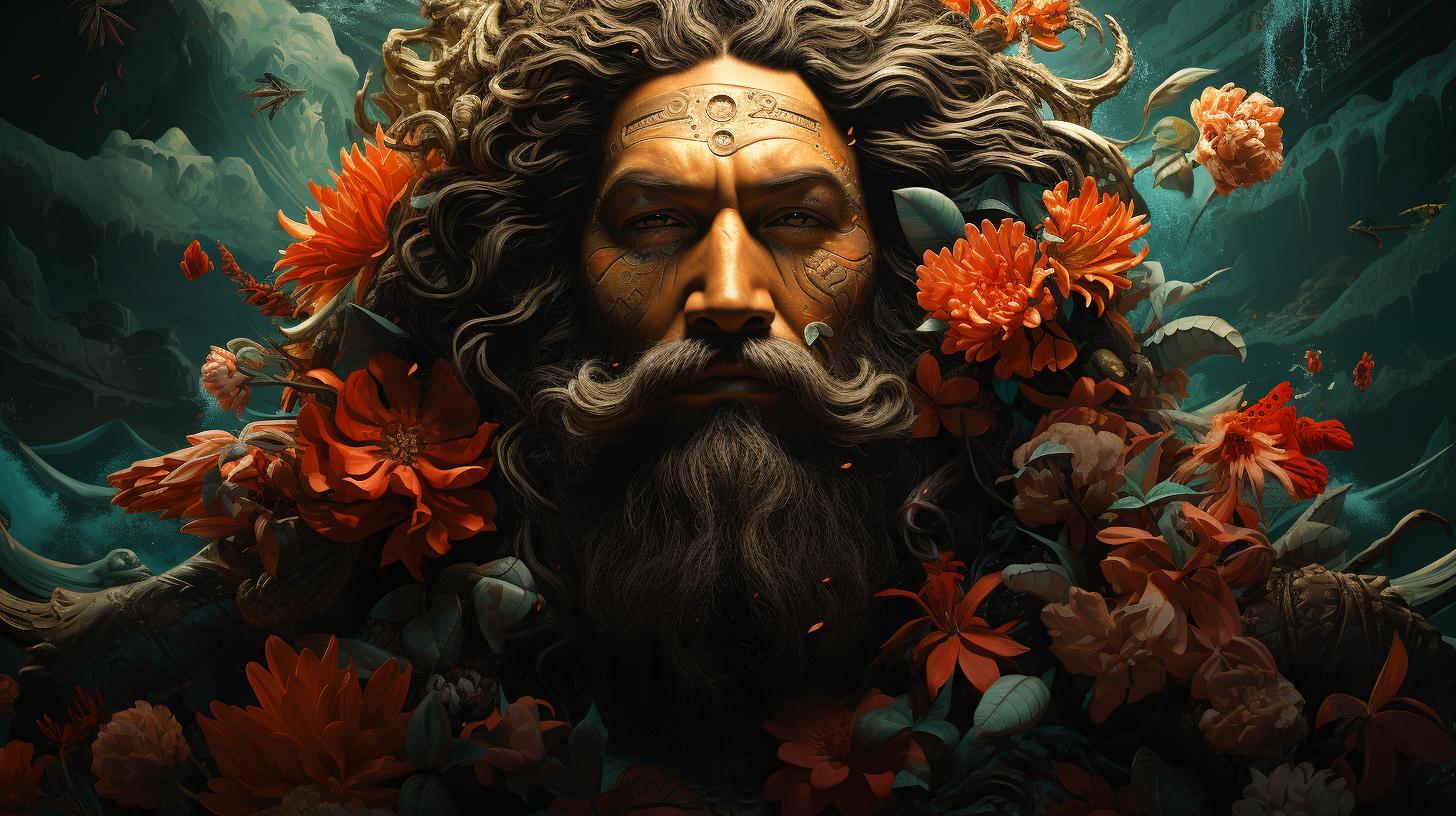
The Hawaiian god Kāne is a central figure in Hawaiian mythology and is revered as the creator and giver of life. Legends tell of how Kāne, along with Lono and Ku, brought forth light to push back the darkness and created the universe.
Kāne is represented by unique symbolic imagery, and his influence extends beyond creation to the roles of ancestral figure and protector of both commoners and chiefs. Through various customs and rituals, Kāne is honored and celebrated as the ultimate source of all living things.
This article explores the fascinating mythology and cultural significance of the Kāne, alongside other deities in Hawaiian belief system.
The Legend of Kāne
Kāne is a prominent figure in Hawaiian mythology, known as the god of creation and life. This section explores the captivating legend surrounding Kāne, shedding light on the origins of the world and its subsequent inhabitants.
The Creation of the World
At the beginning of time, darkness engulfed everything, a state referred to as “Po.” Then, Kāne, realizing his separation from the collective, asserted his pure willpower to break free from the infinite black chaos.
Kāne’s act of liberation pushed Po back and brought forth light, giving birth to the universe as we know it today.
Kāne, Lono, and Ku: The Three Gods
Kāne is one of the four primary Hawaiian gods, alongside Lono, Kanaloa, and Ku. Among them, Kāne holds the highest status and is closely associated with Kanaloa. Not only is Kāne revered as the creator, but he is also considered the ancestor of both commoners and chiefs, playing a significant role in Hawaiian society.
The Creation of the First Man and Woman
Working together, Kāne, Lono, and Ku molded the first human beings. They mixed clay with their saliva and formed the first man and woman. However, due to their misbehavior, Kāne abandoned Earth and withdrew to the heavens, leaving the first humans to navigate their existence without direct divine guidance.
The Role of Kāne in Human Life and Society
Kāne is revered as the ultimate source of life and all living beings in Hawaiian tradition. His creative power has granted life to every living thing, and he holds almost unlimited authority in the universe.
Although he possesses immense power, Kāne values the sanctity of life and does not require human sacrifices in his honor.
- Kāne is known by various names such as Kane-hekili, meaning “thunderer”; Kane-wawahi-lani, meaning “sky-breaker”; and Ka-uila-nui-maka-keha’i-i-ka-lani, meaning “lightning flashing in the heavens.”
- The deity’s representation is often a rare, tall, conical stone acting as an altar. Tiki statues depicting Kāne feature a unique headdress and a fearsome expression, as seen in many depictions of gods.
Kāne’s legend and significance go beyond creation, making him an integral part of Hawaiian culture and spirituality.
His story stands as a reminder of the awe-inspiring forces that shape the world and mankind’s place within it.
Sacred Symbols and Representations of Kāne
Kāne, the Hawaiian god of creation, is associated with unique sacred symbols and representations that hold significant spiritual meaning.
The Unique Image of Kāne
Kāne is often depicted as a rare tall conical stone, serving as an altar. These representations, known as tiki, exhibit a distinctive headdress and a fearsome expression on their faces, common in depictions of Hawaiian gods.
The Spiritual Significance of Tiki
Tiki statues and carvings hold great reverence in Hawaiian culture as they symbolize various gods, including Kāne. These sacred images are believed to embody the spiritual power and connection to the divine realm.
Kāne in Art and Architecture
Kāne’s presence is prominent in Hawaiian art and architecture. His image can be found in ancient petroglyphs, intricately carved wooden sculptures, and temple structures. The artistic representations pay homage to his role as the creator and provider of life.
Kāne and Other Hawaiian Gods
In Hawaiian mythology, Kāne is revered as the creator and giver of life, alongside other significant gods. This section explores the role and symbolism of Kāne in Hawaiian culture, as well as the other deities in Hawaiian mythology.
Kanaloa: The God of the Sea and Navigation
Kanaloa is a prominent Hawaiian god associated with the ocean and navigation. He is often depicted as a handsome man with a long beard and adorned with seaweed. Kanaloa holds immense power over the seas, and Hawaiians looked to him for safe voyages and a bountiful fishing harvest.
Lono: The God of Agriculture and Fertility
Lono is the god of agriculture and fertility in Hawaiian mythology. He is closely associated with the growth of crops, abundance, and prosperity. Hawaiians revered Lono during planting seasons and prayed for rain and fruitful harvests.
Ku: The God of War and Prosperity
Ku is a powerful Hawaiian god revered for his association with war and prosperity. He protects the Hawaiian people and brings success in battles and endeavors. Ku is also linked to agriculture and is believed to influence bountiful harvests and overall prosperity.
Other Deities in Hawaiian Mythology
Apart from Kāne, Kanaloa, Lono, and Ku, Hawaiian mythology encompasses a rich pantheon of other deities. These include Hina, the goddess of the heavens and earth, associated with fertility and the protection of travelers at night; Pele, the fiery goddess of volcanoes; Laka, the goddess of dance and hula; and Haumea, the goddess of fertility in Hawaii.
- Hina: The goddess of the heavens and earth
- Pele: The goddess of fire and volcanoes
- Laka: The goddess of dance and hula
- Haumea: The goddess of fertility in Hawaii
These deities play significant roles in Hawaiian cosmology, cultural practices, and storytelling, shaping the spiritual beliefs and traditions of the Hawaiian people.
Understanding the intricate roles of Kāne and other deities in Hawaiian mythology helps to shed light on the rich and diverse cultural tapestry of Hawaii. Their influence extends beyond ancient times and continues to resonate in contemporary Hawaiian society.
Customs and Rituals
Customs and rituals play a fundamental role in the worship and adoration of Kāne, the Hawaiian god of creation and life. These practices are deeply rooted in the cultural heritage and spiritual beliefs of the Hawaiian people.
Worship and Adoration of Kāne
Worship of Kāne involves reverence and respect for the deity as the creator and giver of life. It is through acts of devotion that individuals seek to establish a connection with Kāne and express their gratitude for the abundance and vitality he brings to the world.
Offerings are made to Kāne in sacred spaces such as temples or outdoor sanctuaries. These offerings can include fresh fruits, flowers, and symbolic items representing life and fertility. Ritual chants and prayers are recited, invoking Kāne’s blessings and seeking his guidance in various aspects of life.
Traditional Greetings and Prayers
Hawaiian tradition dictates specific greetings and prayers when approaching Kāne. A common practice is the act of hoʻokupu, which involves presenting an offering to Kāne while reciting traditional prayers and chants.
This gesture of respect and gratitude reinforces the spiritual connection between the worshipper and Kāne.
During rituals and ceremonies, participants perform oli, or chants, to honor Kāne and invoke his presence.
Oli are recited with precision and deep spiritual intent, often accompanied by musical instruments such as drums and flutes. These chants serve as a way to communicate with Kāne and express devotion and gratitude.
Festivals and Ceremonies in Honor of Kāne
Throughout the year, Hawaiians celebrate various festivals and ceremonies dedicated to Kāne. These events serve as opportunities to gather as a community and express gratitude for Kāne’s blessings and guidance.
One notable festival is the Makahiki, a four-month-long season of peace, games, and reverence for the gods.
During this time, offerings and rituals are conducted to honor Kāne and seek his continued protection and fertility for the land and its people.
Other ceremonies, such as the Hālawa, involve purification rituals and offerings to Kāne and other deities.
These ceremonies are performed with utmost respect and adherence to traditional protocols, reflecting the deep spiritual significance of the rituals in Hawaiian culture.
Cultural Influence of Kāne in Modern Hawaii
The presence of Kāne, the ancient Hawaiian god of creation and life, continues to reverberate in modern Hawaiian culture. His influence can be seen in various aspects of Hawaiian art, literature, contemporary society, and efforts to preserve and share the stories of Kāne.
Kāne in Hawaiian Art and Literature
The artistic and literary traditions of Hawaii often draw inspiration from the rich mythology and legends surrounding Kāne. Paintings, sculptures, and other visual artworks depict Kāne in his various forms, capturing his power and connection to the natural world.
In literature, stories and poems evoke the presence of Kāne, celebrating his role as a creator and the source of life.
Kāne in Contemporary Hawaiian Society
In modern-day Hawaii, Kāne’s influence extends beyond the realm of mythology. His sacred symbols and representations can be found in public spaces, such as parks and cultural centers, serving as a reminder of the deep spiritual connections to Hawaiian heritage.
Kāne’s teachings and values also resonate within the community, promoting concepts of respect for nature, harmony, and the preservation of cultural traditions.
Preserving and Sharing the Stories of Kāne
Efforts to safeguard and pass down the stories of Kāne to future generations play a vital role in maintaining Hawaiian cultural identity. Cultural organizations, educational institutions, and community initiatives actively work to preserve the knowledge and teachings associated with Kāne, ensuring that his wisdom and significance are not forgotten.
Through storytelling, performances, and educational programs, the stories of Kāne are shared as a means of fostering cultural pride and understanding.
The Impact of Western Contact on Hawaiian Mythology
Western contact, particularly with the arrival of missionaries and the spread of Christianity, had a profound influence on Hawaiian mythology. The introduction of new beliefs and religious practices brought significant changes to the traditional Hawaiian spiritual system, including the perception and worship of Kāne and other deities.
Influence of Christianity and Western Beliefs
As Christianity gained influence in Hawaii, the indigenous Hawaiian beliefs were often suppressed or assimilated into the new religion. The concept of monotheism clashed with the polytheistic nature of Hawaiian mythology, leading to the marginalization of Kāne and other gods in favor of the Christian God.
Missionaries actively discouraged the worship of Hawaiian deities, considering it pagan and idolatrous.
Challenges to Preserving Hawaiian Mythology
The decline of traditional Hawaiian religious practices and the imposition of Western ideologies posed challenges to the preservation of Hawaiian mythology. With the loss of native Hawaiian language and the disruption of cultural practices due to colonization, knowledge about Kāne and other gods became scarce.
Many traditional stories, rituals, and chants were at risk of being forgotten or diluted.
Efforts to Revive and Restore Hawaiian Mythology
In recent years, there has been a resurgence of interest in Hawaiian mythology and efforts to revive and restore the ancient traditions. Native Hawaiians, cultural practitioners, and scholars are working to document and revive the stories, rituals, and symbolism associated with Kāne and other deities.
Through language revitalization, educational programs, and community initiatives, there is a growing awareness and appreciation for the spiritual heritage of Hawaii.
.

